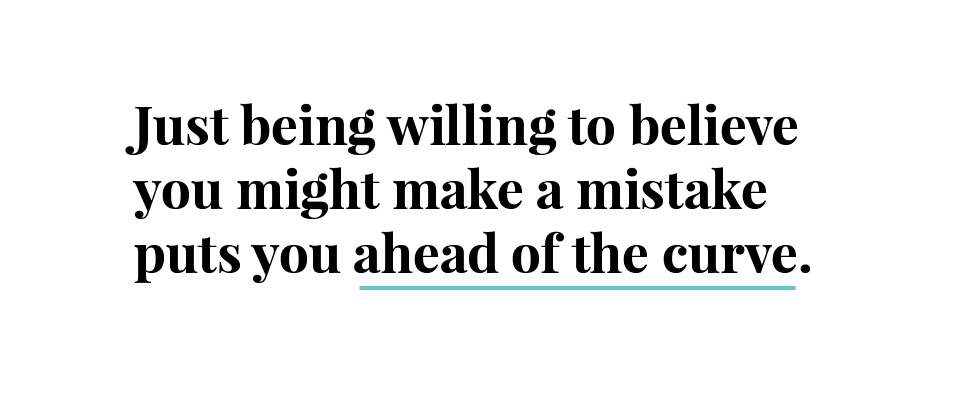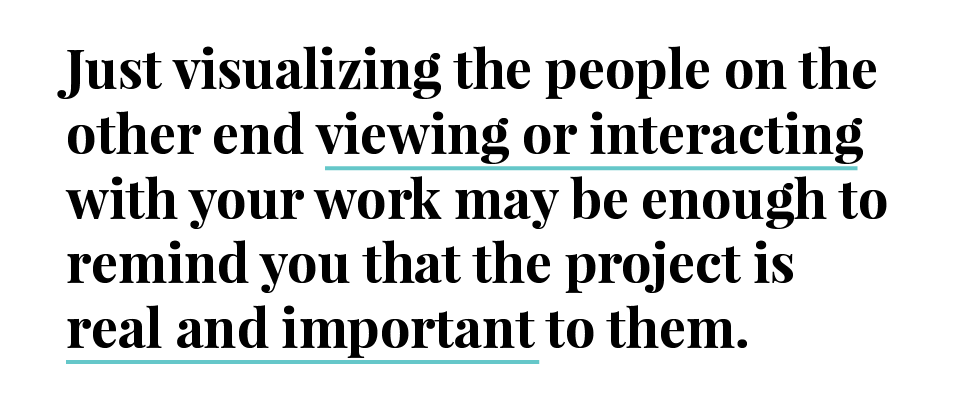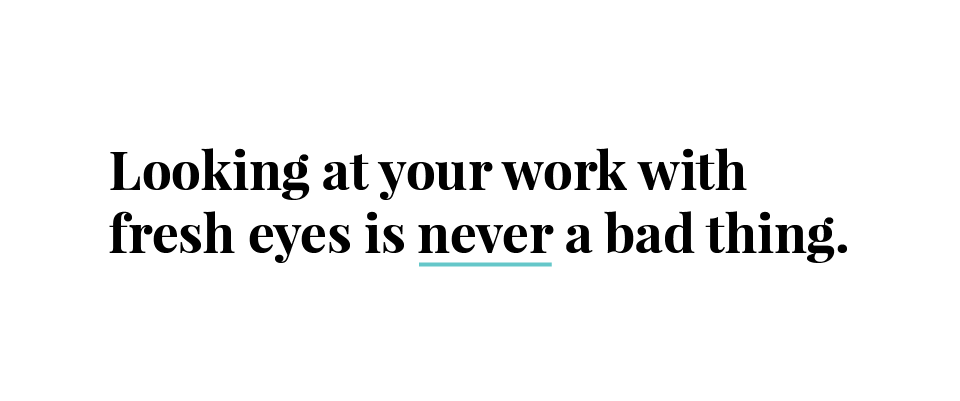Mistakes. We’ve written about them over and over again here at CC. We’ve made them over and over again, too.
We think about them, talk about them, and obsess about them. They’re what make us human and help us grow, but they can also be devastatingly embarrassing, shameful, and costly to our companies and our egos.
Why Is It Scary to Make Mistakes at Work?
Making mistakes at work is scary because it matters—the stakes are high. What if your mistake leads to losing your job and your salary is the primary financial source?! When something is important—like your job and the livelihood it provides—it's completely natural to put pressure on yourself to not mess up.
Perfectionists may struggle with this on a daily basis, and, in rare occasions, their desire for perfection can lead to a diagnosis of atelophobia, which is the extreme fear of making mistakes.
There are real reasons to feel anxious about making mistakes at work. However, mistakes are also our best learning tool. Learning from your mistakes can help improve a wide variety of skills like technical skills,
soft or
interpersonal skills, and even leadership and
communication skills. To help you embrace your mistakes, let's start with a mindset shift.
How to Overcome the Anxiety of Making Mistakes at Work
That sinking feeling you get when you messed up at work—big or small— can cause a ripple effect of anxiety. Whether you made a small mistake like forgetting to send an email or a much larger mistake that cost the company revenue or clients, you still need to learn how to get off the anxiety roller coaster of emotions.
If you don't address the mistake and the anxiety surrounding it, you can run the risk of making things worse for both you and your company. Instead, we recommend following this process to overcome the stress of your mistake at work.
Step 1. Lean Into Your Emotions
Instead of ignoring your emotions, lean into them. If you're feeling overwhelmed, walk away to catch your breath, clear your mind, and let your emotions out in a way that feels safe and secure to you.
Once you've taken the time to separate the emotion from the specific mistake, you'll be able to think more logically and have more clarity about what you should do next.
Step 2: Be Realistic About Your Response
Sometimes a mistake at work can feel like the world is ending—but is it really? It's easy to take a mistake you made and blow it out of proportion because it's personal for you. When you're able to take a step back, consider how you can find or create a sense of balance for yourself.
Step 3: Own Up to Your Mistake—And Quickly
One of the best ways to move past a mistake is to own up to it quickly. By acknowledging your mistake and taking responsibility for it, you're keeping things from simmering inside of you and causing
long-term stress.
If it's a small or harmless mistake—like spelling someone's name wrong in an email—respond back and correct yourself. The response can match the "size" of the mistake. If it's something bigger, consider connecting with your boss sooner than later. And when you do, come with some ideas for how you plan to ensure the same mistake doesn't happen in the future.
Step 4: Practice Self-Compassion
We all make mistakes, and one way to keep yourself in a negative place is with lots of
negative self-talk, insecurity, and self-blame. Instead, we recommend
practicing self-compassion and creating some healthy mantras like "I am human, and I made a mistake. I can move forward and learn from this." This isn't about throwing
toxic positivity at yourself, this is about finding ways to treat yourself with kindness and empathy.
Step 5: Invest in Your Own Development
If you're starting to see a pattern in the mistakes you're making, invest in tools,
courses,
coaching, and other resources to help you improve. Behavior change takes time, and finding an
accountability partner can help you stay motivated.
How Managers Should Respond to Mistakes at Work
Attention managers—please handle your reactions with care! We know managers have a tough job, and they're responsible for a lot at work—performance, team dynamics,
KPIs, employee retention, and the list goes on, but your reaction to mistakes can have a lasting impact on culture, values, and so much more at work.
For starters, good managers understand that mistakes are what help us learn, develop, and improve. And good managers are able to acknowledge their own mistakes. Good managers create a safe culture where a team feels comfortable sharing mistakes, failures, and how they can create growth from those moments.
A good place for managers to start when addressing employees' mistakes is by looking at their overall performance. Is this an isolated mistake or something that is happening often? If it's happening often, what's their process? What type of training and/or resources are they being given to improve?
Perhaps you'll find a bigger miscommunication happening or the process needs an overhaul. The goal is to not create a "blame game" environment or create animosity among coworkers.
Good managers can also frame mistakes at teachable moments and instead of simply giving the answer to an employee or getting angry at them (which just creates more fear), find ways to ask questions and be active
listeners. Give your employees enough space and autonomy to figure out their own solutions, but be available to provide
effective feedback.
Psst: If you're a manager looking for help with creating an engaged team, check out our online course, The New Manager Manual.
How to Admit a Mistake at Work
So you just made the biggest mistake in front of your new boss, leaving you in tears, and now the anxiety of what your punishment will be is looming over you.
That's exactly what we don't want. The silver lining here is that the sooner you admit your mistake, the better off you'll be both in the immediate future and in the long run.
Yes, the vulnerability and emotional response are part of the process, but the main priority here is to come up with a game plan. In some situations, like with minor mistakes, an apology is the easiest way to move forward. A simple acknowledgment that you messed up can go a long way.
In other work situations, you might need to offer a more in-depth explanation. You can detail why you took the actions that you took, make a point to validate the other person's feelings and/or actions, and work together to put a plan in place to avoid this mistake in the future.
Once a plan is in place, make sure you follow through on what you said you were going to do. An apology that isn't backed up by your actions will feel insincere at best. Do your best not to make the same mistake. This can help improve the situation and make the other person feel more comfortable.
Avoid Mistakes at Work: Our 3-Step Process
It is possible, however, to make a few small adjustments to the way you approach your work in order to mitigate those pesky, embarrassing blunders. Just being willing to believe you might make a mistake puts you ahead of the curve.
A
series of studies on decision-making found that people who believed that they could be wrong were more likely to learn from and avoid repeating mistakes. On the other hand, those who thought that they were always right, or “experts,” were not only more likely to make mistakes, but were also more likely to make them again.
So accept that you will screw up at work sometimes. But once you’ve done that, use these three simple steps to avoid the really dumb ones.
Step 1. Do a Gut Check
When you begin a task at work, you probably have a gut feeling about how important it is. Did your boss assign it to you with casual nonchalance or was she vibrating with stress when she passed it across your desk? Will your work be seen only by you and your department or will hundreds, thousands, maybe even millions of eyeballs see it?
When you work in a busy environment, it can be easy to forget that your work doesn’t just disappear into the ether when you submit it, send it, or release it. Internal team members, customers, users, readers, students, or patients might see it and interact with it, and if there’s a mistake, those people will notice.
Even though it might be hard to remember in the moment, take a second when you begin a new task to do a gut check about the weight of what you’re doing. Just visualizing the people on the other end viewing or interacting with your work may be enough to remind you that the project is real and important to them—not just a list of annoying to-dos standing between you and happy hour.
The good news? Most of us are actually really skilled at this part. “Within a tenth of a second or so after looking at a scene, we are usually able to extract its meaning, or gist,” Hallinan writes. But the rest? Not so easy. “The price we pay for this rapid-fire analysis is that we miss a lot of details.”
Step 2. Write a Checklist, Go Through It, Then Take a Break To Revisit Your Work
This part's super easy—you just need a piece of scrap paper. Once you’ve completed your task, take five minutes to think about everything you need to double-check in order to avoid mistakes.
Did you run a spell-check, triple-check measurements, comb your spreadsheet for bugs, re-read that email? Write down everything you need to check before hitting “submit,” then physically check it off. This relieves you and your brain of the responsibility of remembering more than five pieces of information about the project.
Then add another failsafe to your process. Go to the bathroom, come back, and check again before you hit send. Looking at your work with fresh eyes is never a bad thing. Even if you’re on a quick deadline, our guess is that a bathroom trip won’t make or break anything. But it will give you peace of mind.
Step 3. Ask Yourself and Your Organization if You’re Working Efficiently
If you’re reading this article because you’re a type-A overachiever who’s suddenly making a million mistakes at a new job, consider this: it might not be you. In Hallinan’s book, he talks about how anesthesiologists used to make frequent fatal errors because of inconsistencies in the machinery they were using. Then in the 1980s, a group of doctors advocated for standardizing the machines to make their process more efficient. Now, anesthesiologists rarely make those lethal mistakes.
What does this mean for you? Many organizations hire experts to make their processes and workflow more efficient, but others rely on the employees themselves to
speak up when something isn’t working. If you feel comfortable enough to do this in your role, consider talking to your manager about what makes your job tedious, inefficient, and anxiety-provoking—but come prepared with solutions. Don’t forget to thank your manager for taking the time to listen, even if she doesn't implement the changes right away.
But the problem could also be smaller: Is one of the processes you’re using a little bit broken? Is there an Excel formula or keyboard shortcut that could streamline something time-consuming and monotonous?
Consider this as you’re doing your daily tasks, and then Google around or ask friends in similar jobs how they deal with the issue. Sometimes, the solution is something you’ve never considered but is totally easy and doable.













